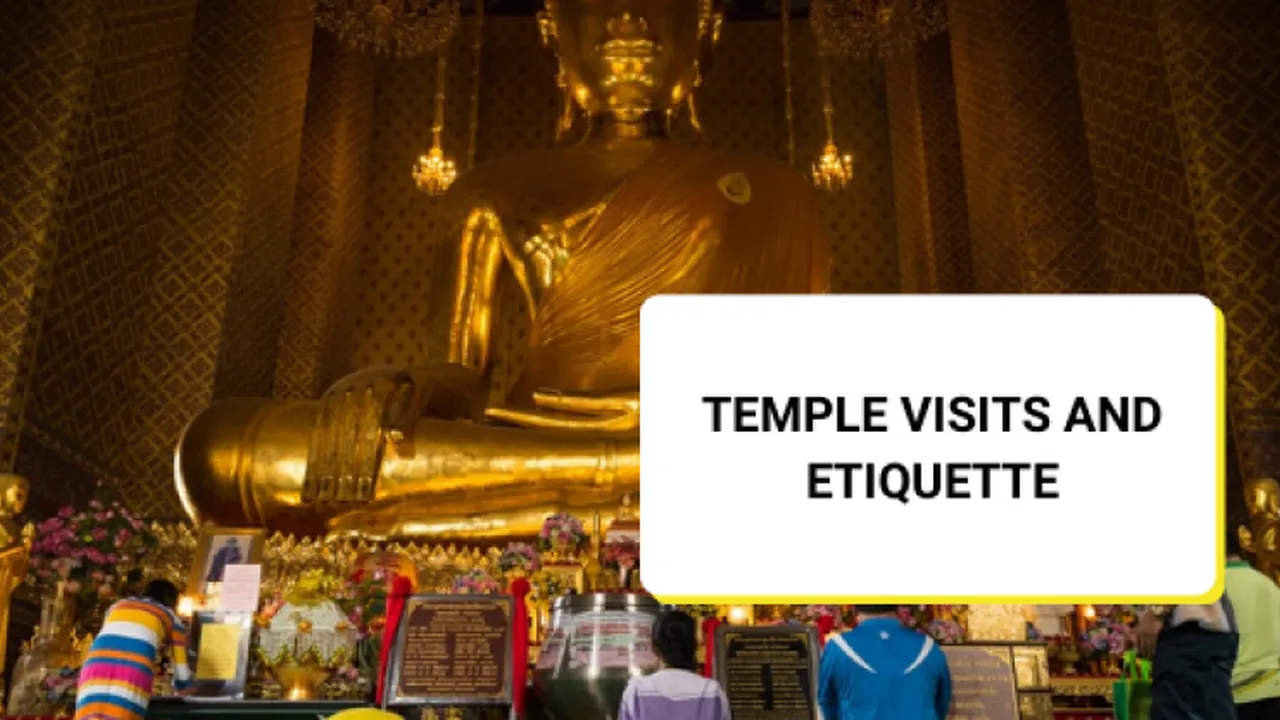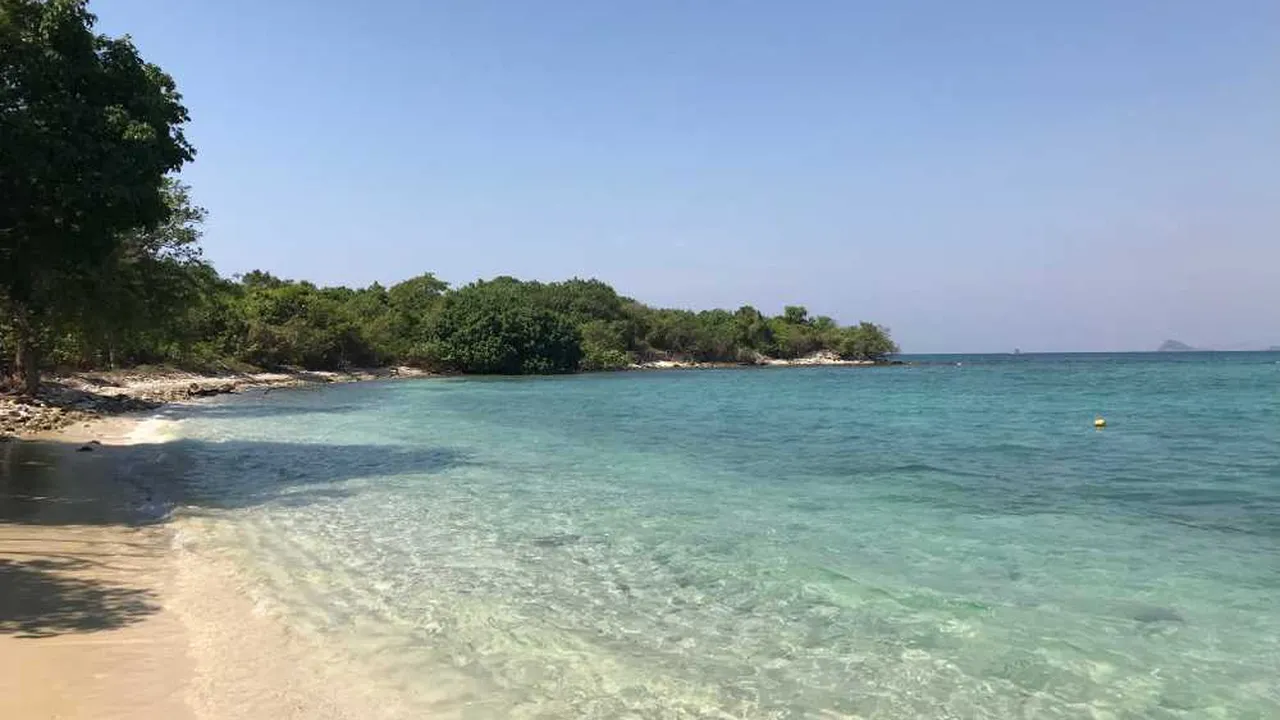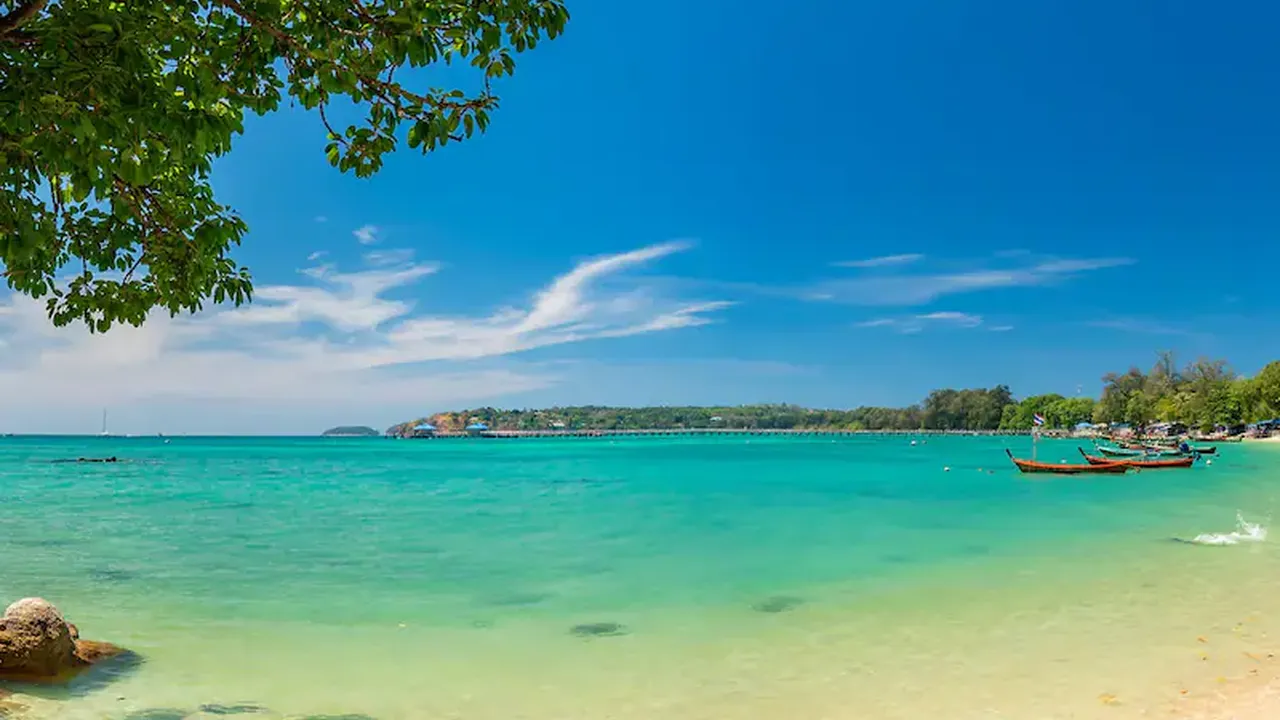Planning Your Trip to Thailand: A Step-by-Step Guide

Thailand Travel Planning: Initial Research and Inspiration
Alright, so you're dreaming of Thailand! Palm trees, temples, amazing food... I get it. First things first, let's get inspired. Spend some time browsing travel blogs, Instagram (search #ThailandTravel, #ThailandAdventures, #VisitThailand), and YouTube. See what catches your eye. Do you picture yourself island hopping? Exploring ancient ruins? Stuffing your face with Pad Thai? Knowing what *kind* of trip you want is crucial.
Think about the vibe you're going for. Relaxing beach vacation? Adventurous backpacking trip? Luxury getaway? This will drastically affect where you go and what you do. Consider the time of year too. Thailand has distinct seasons, and some areas are better visited at certain times than others. Don't underestimate the power of a good guidebook either. Lonely Planet and Rough Guides are solid starting points. They often have suggested itineraries which can be super helpful.
Thailand Visa and Entry Requirements: Getting the Paperwork Sorted
Nobody wants visa drama ruining their vacation. Most nationalities can enter Thailand visa-free for tourism for a certain period (usually 30 days, sometimes more). However, it's *absolutely crucial* to check the specific requirements for your nationality on the official website of the Thai embassy or consulate in your country. Don't rely on random websites or what your friend told you. Official sources only!
Make sure your passport is valid for at least six months beyond your intended stay. They're sticklers for this. Also, keep a digital copy of your passport and visa (if required) stored securely online (Google Drive, Dropbox, etc.) and email a copy to yourself. This is a lifesaver if you lose the original.
For longer stays, you'll likely need a visa. Research your options well in advance. Tourist visas, education visas (if you plan on taking a language course), and retirement visas are all possibilities. The application process can be a bit of a hassle, so start early.
Thailand Budgeting and Money Matters: How Much Will It Cost?
Thailand can be incredibly affordable, or surprisingly expensive, depending on your travel style. Backpackers can easily get by on $30-$50 per day, while those seeking luxury might spend $200+ per day. It really depends on your accommodation choices, food preferences, and activities.
Accommodation: Hostels are the cheapest option (around $10-$20 per night), followed by budget guesthouses ($20-$40). Mid-range hotels range from $50-$100, and luxury resorts can easily exceed $200. Consider using websites like Agoda, Booking.com, and Airbnb to compare prices and find deals. Book in advance, especially during peak season.
Food: Street food is your friend! Delicious and incredibly cheap. You can get a fantastic meal for $2-$5. Restaurant meals are more expensive, but still generally affordable. Expect to pay $10-$20 for a decent restaurant meal in a touristy area. Drinks can add up, especially if you're hitting the bars.
Activities: Entrance fees to temples and attractions are generally reasonable ($5-$15). Tours and excursions can vary widely in price. Bargain respectfully when possible. Transportation costs will depend on how you get around. Taxis and tuk-tuks can be expensive if you don't negotiate the price beforehand. Public transportation (buses, trains) is much cheaper.
Don't forget to factor in the cost of flights, travel insurance, visas (if required), and souvenirs. It's always a good idea to have a buffer for unexpected expenses.
Money Tips:
- Notify your bank and credit card companies of your travel dates to avoid having your cards blocked.
- Bring a mix of cash and credit/debit cards.
- Withdraw cash from ATMs upon arrival (there will be fees, so withdraw larger amounts).
- Be aware of ATM skimming scams. Use ATMs located inside banks.
- Learn a few basic Thai phrases for bargaining and showing respect.
Thailand Accommodation Booking: Finding the Perfect Place to Stay
Thailand offers a huge range of accommodation options, from budget hostels to luxurious resorts. The best choice for you will depend on your budget, travel style, and location.
Hostels: Great for solo travelers and budget backpackers. Social atmosphere, dorm rooms, and often organized activities.
Guesthouses: A step up from hostels, offering private rooms at affordable prices. Often family-run and provide a more authentic experience.
Hotels: A wide range of options, from budget to luxury. Standard amenities and services.
Resorts: Offer a more luxurious experience, with amenities like swimming pools, spas, and restaurants. Often located in beachfront locations.
Airbnb: Offers a variety of apartments, houses, and villas. Can be a good option for families or groups. Read reviews carefully before booking.
Booking Tips:
- Book in advance, especially during peak season (November-February).
- Read reviews carefully before booking.
- Consider the location. Is it close to attractions, transportation, and restaurants?
- Check the amenities. Does the accommodation have air conditioning, Wi-Fi, and other essentials?
- Compare prices on different websites. Agoda, Booking.com, and Airbnb are good starting points.
- Look for deals and discounts.
Thailand Transportation Options: Getting Around the Country
Thailand has a well-developed transportation system, making it easy to get around the country. Here are some of the most common options:
Flights: The fastest way to travel long distances. Several budget airlines operate in Thailand, offering affordable flights to major cities and islands. Nok Air, Thai Lion Air, and AirAsia are popular choices.
Trains: A scenic and comfortable way to travel. The State Railway of Thailand operates trains throughout the country. Book tickets in advance, especially for overnight trains.
Buses: The most affordable way to travel long distances. Several bus companies operate in Thailand, offering a variety of routes. VIP buses are more comfortable than standard buses.
Ferries: The main way to travel between the islands. Several ferry companies operate in Thailand, offering a variety of routes. Book tickets in advance, especially during peak season.
Taxis and Tuk-Tuks: Convenient for short distances within cities. Negotiate the price before getting in.
Motorbikes: A popular way to explore the islands. Be careful, as traffic can be chaotic. Wear a helmet and have a valid driver's license.
Songthaews: Shared taxis that operate on fixed routes. A cheap and convenient way to get around some cities.
Thailand Packing Essentials: What to Bring (and What to Leave Behind)
Packing light is always a good idea, but here are some essentials you'll want to bring to Thailand:
- Lightweight and breathable clothing. Thailand is hot and humid.
- Swimsuit. You'll be spending a lot of time at the beach or pool.
- Sunscreen. The sun is strong in Thailand.
- Insect repellent. Mosquitoes can be a problem, especially in the evenings.
- Comfortable walking shoes. You'll be doing a lot of walking.
- Flip-flops or sandals. Essential for the beach and temples.
- Hat and sunglasses. To protect yourself from the sun.
- Universal adapter. Thailand uses 220V electricity.
- First-aid kit. Include essentials like pain relievers, bandages, and antiseptic wipes.
- Travel-sized toiletries. You can buy most toiletries in Thailand, but it's good to have a few essentials on hand.
- Reusable water bottle. Stay hydrated and reduce plastic waste.
- Small backpack or daypack. For carrying your essentials while exploring.
- Phrasebook or translation app. Useful for communicating with locals.
What to Leave Behind:
- Expensive jewelry. You don't want to attract unwanted attention.
- Heavy clothing. You won't need it.
- Too many shoes. A few pairs of comfortable shoes are all you need.
Thailand Food Adventures: Must-Try Dishes and Where to Find Them
Thai food is one of the highlights of any trip to Thailand. Here are some must-try dishes:
- Pad Thai: Stir-fried rice noodles with shrimp, tofu, peanuts, and bean sprouts.
- Green Curry: A creamy coconut milk-based curry with green chilies, vegetables, and meat.
- Tom Yum Soup: A hot and sour soup with lemongrass, galangal, lime juice, and chilies.
- Mango Sticky Rice: Sweet sticky rice with fresh mango and coconut milk.
- Massaman Curry: A mild and flavorful curry with potatoes, onions, and peanuts.
- Som Tum (Papaya Salad): A spicy and refreshing salad with green papaya, tomatoes, peanuts, and chilies.
- Satay: Grilled meat skewers served with peanut sauce.
Where to Find the Best Food:
- Street Food Stalls: The best place to find authentic and affordable Thai food.
- Local Markets: Offer a variety of fresh produce, cooked food, and snacks.
- Restaurants: A wide range of options, from casual eateries to fine dining establishments.
- Cooking Classes: Learn how to make your favorite Thai dishes.
Thailand Activities and Attractions: Things to See and Do
Thailand offers a wide range of activities and attractions to suit all interests. Here are some popular options:
- Visit Temples: Thailand is home to thousands of temples, each with its own unique architecture and history. Wat Arun (Temple of Dawn) in Bangkok and Wat Phra That Doi Suthep in Chiang Mai are must-sees.
- Explore Ancient Ruins: Ayutthaya and Sukhothai are former capitals of Thailand and offer fascinating glimpses into the country's history.
- Relax on the Beaches: Thailand is famous for its beautiful beaches. Phuket, Krabi, and Koh Samui are popular destinations.
- Go Island Hopping: Explore the many islands of Thailand, each with its own unique character.
- Go Scuba Diving or Snorkeling: Thailand offers excellent scuba diving and snorkeling opportunities.
- Take a Thai Cooking Class: Learn how to make your favorite Thai dishes.
- Visit an Elephant Sanctuary: Ethical elephant sanctuaries allow you to interact with elephants in a responsible way.
- Go Hiking or Trekking: Explore the lush jungles and mountains of Thailand.
- Attend a Thai Massage: Relax and rejuvenate with a traditional Thai massage.
- Shop at Local Markets: Bargain for souvenirs and local products.
Thailand Safety Tips: Staying Safe and Healthy on Your Trip
Thailand is generally a safe country for tourists, but it's important to be aware of potential risks and take precautions.
- Be aware of your surroundings. Avoid walking alone at night in poorly lit areas.
- Protect your belongings from theft. Keep valuables in a safe place and be aware of pickpockets.
- Be careful when crossing the street. Traffic can be chaotic.
- Avoid scams. Be wary of anyone who approaches you offering unsolicited services or deals.
- Drink plenty of water to stay hydrated.
- Eat at reputable restaurants and street food stalls.
- Be aware of the risks of sun exposure. Wear sunscreen, a hat, and sunglasses.
- Get vaccinated against common diseases. Consult your doctor before traveling.
- Purchase travel insurance. This will cover you in case of medical emergencies, theft, or other unforeseen events.
- Respect Thai culture. Dress modestly when visiting temples and be mindful of local customs.
Recommended Products for Your Thailand Trip
Here are a few specific product recommendations that can enhance your Thailand trip:
- Pacsafe Venturesafe X12 Anti-Theft Backpack: This backpack is designed to protect your belongings from theft. It features cut-resistant fabric, locking zippers, and a hidden compartment for valuables.
- Use Case: Ideal for exploring crowded cities and markets where pickpockets are common.
- Comparison: Compared to a regular backpack, the Pacsafe Venturesafe X12 offers significantly more security. Cheaper backpacks offer little to no protection against theft.
- Price: Around $100-$150.
- LifeStraw Go Water Filter Bottle: This water bottle filters water as you drink, making it safe to drink from taps and other questionable sources.
- Use Case: Perfect for staying hydrated while hiking or exploring remote areas.
- Comparison: Compared to buying bottled water, the LifeStraw Go Water Filter Bottle is more environmentally friendly and saves you money in the long run. It's also more convenient than carrying around a large supply of bottled water.
- Price: Around $30-$40.
- Anker PowerCore 10000 Portable Charger: This portable charger can recharge your phone multiple times, ensuring you stay connected even when you're away from power outlets.
- Use Case: Essential for long days of sightseeing or traveling between destinations.
- Comparison: Compared to cheaper portable chargers, the Anker PowerCore 10000 is more reliable and offers a longer lifespan.
- Price: Around $25-$35.
- Sea to Summit Silk Blend Travel Liner: This lightweight and compact travel liner can be used in hostels or budget hotels to provide a clean and comfortable sleeping environment.
- Use Case: Ideal for budget travelers who want to ensure a clean sleeping environment.
- Comparison: Compared to sleeping directly on hostel bedding, the Sea to Summit Silk Blend Travel Liner offers a more hygienic and comfortable experience.
- Price: Around $80-$100.
- Kindle Paperwhite: A waterproof e-reader is great for long plane rides or relaxing on the beach. Pre-load it with books about Thailand, travel guides, and some light reading.
- Use Case: Perfect for travelers who love to read but don't want to carry heavy books.
- Comparison: Compared to physical books, the Kindle Paperwhite is lighter, more compact, and allows you to carry hundreds of books in one device.
- Price: Around $140-$160.
:max_bytes(150000):strip_icc()/277019-baked-pork-chops-with-cream-of-mushroom-soup-DDMFS-beauty-4x3-BG-7505-5762b731cf30447d9cbbbbbf387beafa.jpg)






